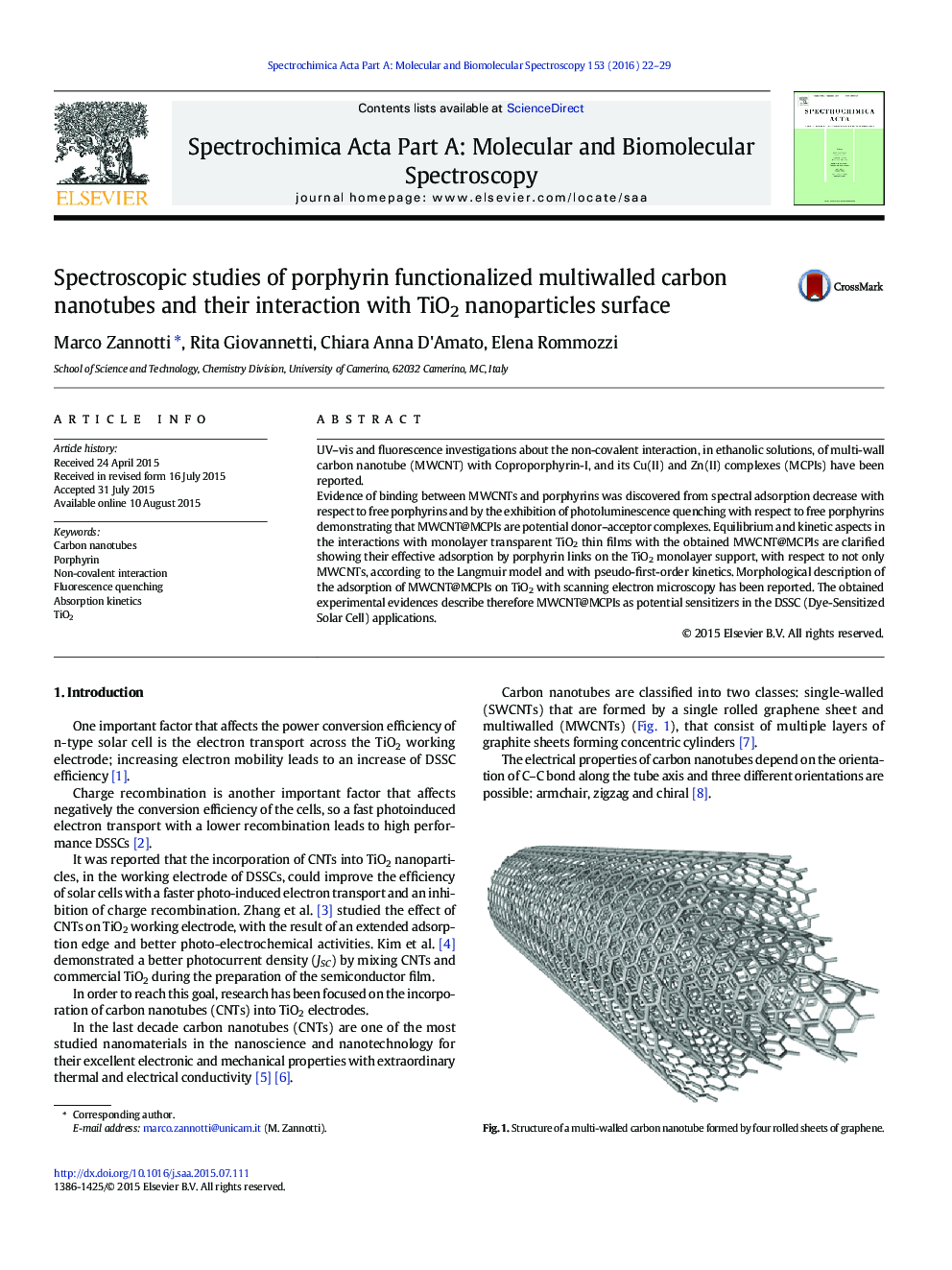| Article ID | Journal | Published Year | Pages | File Type |
|---|---|---|---|---|
| 1228694 | Spectrochimica Acta Part A: Molecular and Biomolecular Spectroscopy | 2016 | 8 Pages |
•Coproporphyrin dyes interact with MWCNTs through non-covalent interactions.•Fluorescence quenching is a direct evidence of the interaction between MWCNTs and Coproporphyrins.•MWCNT@Coproporphyrins are adsorbed on a TiO2 film by porphyrin link.•Adsorption process follows the Langmuir model with a pseudo-first-order kinetics.
UV–vis and fluorescence investigations about the non-covalent interaction, in ethanolic solutions, of multi-wall carbon nanotube (MWCNT) with Coproporphyrin-I, and its Cu(II) and Zn(II) complexes (MCPIs) have been reported.Evidence of binding between MWCNTs and porphyrins was discovered from spectral adsorption decrease with respect to free porphyrins and by the exhibition of photoluminescence quenching with respect to free porphyrins demonstrating that MWCNT@MCPIs are potential donor–acceptor complexes. Equilibrium and kinetic aspects in the interactions with monolayer transparent TiO2 thin films with the obtained MWCNT@MCPIs are clarified showing their effective adsorption by porphyrin links on the TiO2 monolayer support, with respect to not only MWCNTs, according to the Langmuir model and with pseudo-first-order kinetics. Morphological description of the adsorption of MWCNT@MCPIs on TiO2 with scanning electron microscopy has been reported. The obtained experimental evidences describe therefore MWCNT@MCPIs as potential sensitizers in the DSSC (Dye-Sensitized Solar Cell) applications.
Graphical abstractFigure optionsDownload full-size imageDownload as PowerPoint slide
